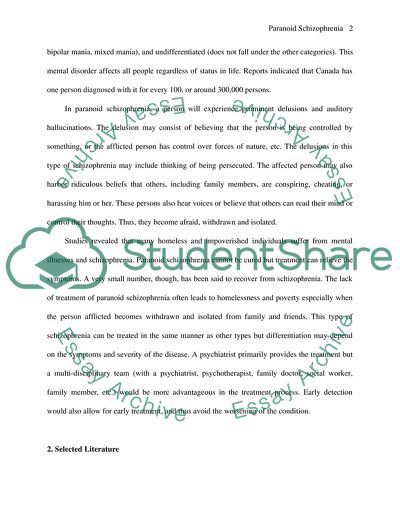Cite this document
(Paranoid Schizophrenia Report Example | Topics and Well Written Essays - 2750 words, n.d.)
Paranoid Schizophrenia Report Example | Topics and Well Written Essays - 2750 words. https://studentshare.org/psychology/1754437-paranoid-schizophrenia-and-how-lack-of-treatment-leads-to-homelessnesspoverty
Paranoid Schizophrenia Report Example | Topics and Well Written Essays - 2750 words. https://studentshare.org/psychology/1754437-paranoid-schizophrenia-and-how-lack-of-treatment-leads-to-homelessnesspoverty
(Paranoid Schizophrenia Report Example | Topics and Well Written Essays - 2750 Words)
Paranoid Schizophrenia Report Example | Topics and Well Written Essays - 2750 Words. https://studentshare.org/psychology/1754437-paranoid-schizophrenia-and-how-lack-of-treatment-leads-to-homelessnesspoverty.
Paranoid Schizophrenia Report Example | Topics and Well Written Essays - 2750 Words. https://studentshare.org/psychology/1754437-paranoid-schizophrenia-and-how-lack-of-treatment-leads-to-homelessnesspoverty.
“Paranoid Schizophrenia Report Example | Topics and Well Written Essays - 2750 Words”. https://studentshare.org/psychology/1754437-paranoid-schizophrenia-and-how-lack-of-treatment-leads-to-homelessnesspoverty.


